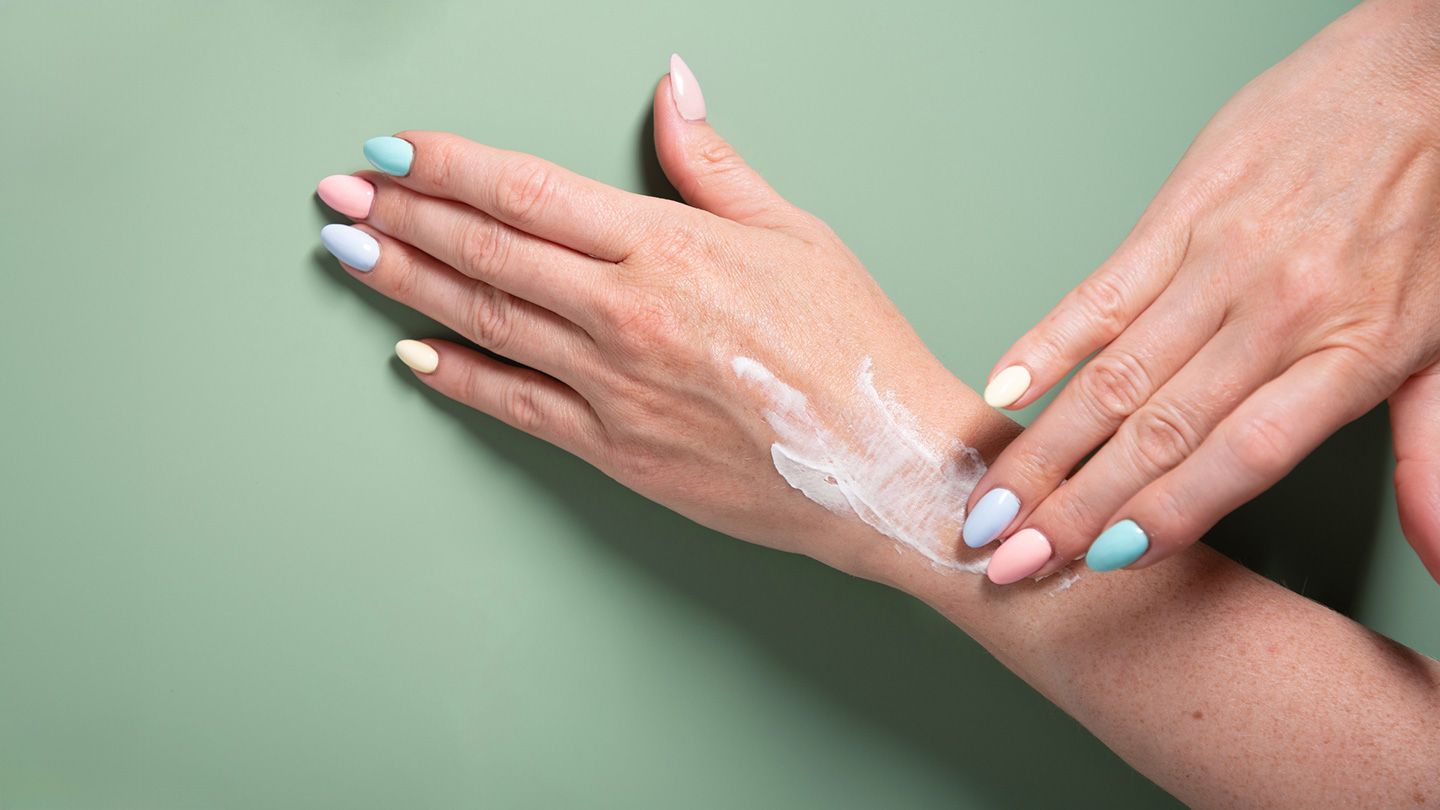A number of different topical creams, ointments, and patches may be used to treat joint pain in people with rheumatoid arthritis. Here are some of the most common treatment types.
Topical NSAIDs (Nonsteroidal Anti-Inflammatory Drugs)
This category of treatments includes diclofenac (Voltaren), which is widely available as a gel but can also come as a liquid or patch that is applied to the skin. These products reduce pain and inflammation close to the area where they are applied, and may be a good alternative to oral NSAIDs like ibuprofen and naproxen in some cases.
When it comes to topical treatments, “The best studies are on the topical nonsteroidals, like diclofenac. It has pretty substantial safety data,” says Deane. That means for most people, it’s safe to apply diclofenac as directed to the area of your joint pain up to four times a day.
Diclofenac is available over the counter, but if you use it multiple times daily, getting a prescription version of it that your insurance covers may end up saving you money, Deane says.
Topical NSAIDs like diclofenac tend to work best when your joint pain is mild to moderate and not widespread.
“When patients have pain in one or two joints, they can use topical Voltaren gel for some relief, although it won’t be as helpful as systemic treatment,” says Torkian, who notes that this treatment is often useful for people with both RA and osteoarthritis.
Because they mostly affect the area where they’re applied, topical NSAIDs tend to work best for pain in smaller joints near the skin surface, such as your knees, ankles, elbows, or hands. Talk to your doctor before using them, since some of the drug is absorbed into your bloodstream and may interact with other drugs you take, including oral NSAIDs.
Capsaicin
Capsaicin is a treatment derived from chili peppers, and it works by blocking a chemical in nerve cells that sends pain signals. It typically causes a burning sensation when applied to your skin, and may be particularly effective for osteoarthritis in your knees or hands.
Capsaicin is available in both prescription and over-the-counter versions, and includes patches as well as creams (including Capzasin-HP and Zostrix).
Capsaicin-based treatments can take a bit longer to work than topical NSAIDs.
“They may take days to alter the nerves’ processing of pain, but they can be quite effective,” says Deane, who notes that they can be good for pain in elbows as well as knees or hands.
It’s important to wash your hands thoroughly after applying capsaicin creams, since they can cause a burning sensation in your ears, mouth, nose, or eyes.
Lidocaine
Lidocaine is an analgesic, or numbing agent, that blocks pain signals in your skin’s nerve endings when used as a topical treatment. Its typical form is a skin patch, but it may also be used as a gel.
“Lidocaine basically blunts pain. It doesn’t alter inflammatory pathways, and it often won’t work for a long period of time, because the body becomes accustomed to it,” says Deane.
For this reason, he says, it’s best for temporary conditions like overuse injuries or recovery from procedures like knee arthroscopy.
Salicylates
Salicylates belong to the same drug category as aspirin, and have a mild anti-inflammatory effect. They may be effective for minor joint injuries and aches, but probably aren’t a great choice for pain that’s more severe.
Topical salicylates include methyl salicylate, which is often combined with menthol as a topical treatment (including in Bengay Ultra Strength cream). Another salicylate found in skin creams is trolamine salicylate (including in Aspercreme and Blue-Emu).
Counterirritants
Counterirritants work by making your skin feel hot or cold, which can help block or distract from pain. This category of treatments includes menthol and camphor, and can be found in over-the-counter creams, gels, and patches (including Icy Hot and Bengay products).
Counterirritants may stop being effective once the hot or cold sensation wears off, so they’re meant to be used for mild and temporary aches and pains.
Read the full article here




